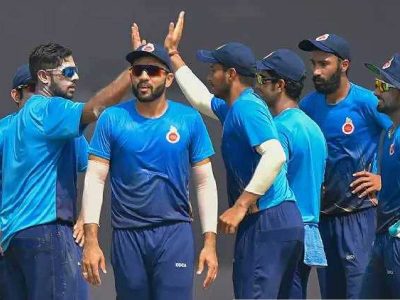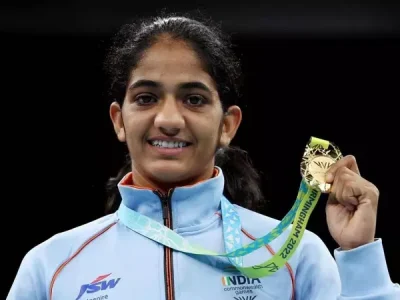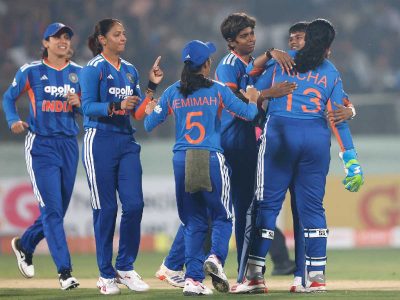Price is what you pay. Value is what you get,” the great Warren Buffet said.
Who doesn’t know the all-time great investor? Much like Mr Buffett’s expansive investment business, the grand Indian Premier League (IPL) runs on the philosophy of investments. Franchises, notably corporates and high net worth individuals (HNWIs), pump in their money to build portfolios (teams) that they expect will give them handsome returns — qualify for the playoffs or emerge as champions — in a fiercely competitive market (tournament).
Mr Buffett has never written a book on his investment philosophies. All we know about his investment philosophies is through his quotes and the annual letter he writes to Berkshire Hathaway’s shareholders. Like there’s no book yet on Buffet’s methodologies, there’s not much to meaningfully decipher how IPL franchises invest in players or how those investments (players) fare against their perceived values. As India and the rest of the cricketing world bask in the success of the IPL’s just-concluded 11th edition, here is an attempt to analyse this year’s investments and performance of various “stocks” that were part of the league.
Assess return on investments (ROI)
Franchise cricket is a novel yet prevalent concept now. Not just cricket experts but even stakeholders beyond the cricketing sphere are involved in building and managing squads. Add to it the different nature of this format. Consequently, the selection logic and performance indicators applied to build an IPL squad are different from what goes into forming an international team.
In franchise cricket, teams play as much for pride and ranking as good returns on capitals invested in them with a price tag attached to each player. In professional sport, pride and reputation is a common fibre, binding players across nationalities, formats and types (international and franchise). The return on investment (ROI), however, makes it imperative to analyse performances not just in terms of cricketing yardsticks, such as runs scored or wickets taken, but commensurate to a player’s price as well. For that reason alone, and the specifics that are to be discussed subsequently, Warren Buffet made it to the prelude of this piece.
Calculating ROI for IPL players is easier said than done though. As much as for the complexity of mathematics, the scarcity of quality data points also poses a big challenge. While purchased prices could be the prices for which players were bargained and bought for during the auction (which are readily available), assessing values is an inherently subjective process. To make them quantifiable, one must devise and lay out some rules, such as how to equate batter’s runs with bowler’s wickets?
Though there are no official measures yet, points calculated to assess the Most Valuable Players (MVP) or the mechanism adopted by Fantasy Leagues serve as good guiding principles. They are sufficiently all-inclusive as well as simple to determine a player’s value. They allocate points for each department of the game — batting, bowling and fielding. For batsmen, there are points for each run scored, better strike rates, impact points for boundaries and milestone points for centuries, half-centuries and quarter-centuries (it’s T20 after all). Similarly, for bowlers, points are awarded for each wicket taken, maintaining a good economy rate, milestones for multiple wickets and so on. Not just that, players earn points for other on-field activities and special performances — such as for taking catches and effecting run-outs and being awarded Man of the Match.
That sounds reasonably good, but how reliable and consistent are the Fantasy League points analogous to different cricketers’ performances?
Well, the names in the point list neither disappoint nor surprise us. Fandromeda, the leading IPL fantasy site, ranks Rishabh Pant, KL Rahul, Sunil Narine, Kane Williamson and Jos Buttler as the five biggest point earners (stats are updated until the end of the group stage), and the list is closely alike to the official IPL site. There are seven common names in the two lists of top ten rankers across the two sites. Moreover, top fantasy point earners are among IPL’s top run-getters and/or wicket takers too.
Now that our logic to assign player values is hypothesis-tested, let us analyse this year’s performers, find the patterns and pursue the details.
Equity Market and Asset Performance
Mapping 136 players from across eight IPL teams, based on their values (points) and auction/retained prices, gives us diverse perspectives. As mentioned earlier, the selection of IPL players is similar in many ways to stock-picking and portfolio management. Each player offers a unique value proposition to a team just as every stock serves a specific purpose in a well-designed portfolio. Just as managing a portfolio of assets needs thorough analysis and discipline, player selection also involves scouting, mentoring and proper handling. One way to categorise the universe of IPL players is to arrange them as you would the stocks in a typical portfolio. Please refer to the chart below.
The IPL 2018 blue chips
If at the beginning of the IPL, one were to take a guess on which players would end up as the top ten run-getters or all-rounders, the usual suspects would have been Virat Kohli, AB de Villiers, MS Dhoni or Hardik Pandya and Sunil Narine. By the end of the league stage, Virat was ranked 6th, ABD 8th and Dhoni 9th on the highest run-getters’ list. Narine (327 runs, 16 wickets), Hardik (260 runs, 18 wickets) also logged in very impressive numbers. These players instil such certainty in our minds because of their all-weather heroics in the past. It won’t be unjust to label them, therefore, as the IPL’s blue-chip stocks à la TCS, Reliance and L&T of the business world. Just as investors do not mind splurging extra cash to bag these high-priced stocks for their time-tested return potential, IPL franchises also retained these players in expectation of large values. They did not disappoint. As most blue-chip stocks are market leaders in their industries, the IPL blue-chips are either the captains or the cream of the crop for their squads.
The season’s growth stocks
If selecting or retaining these blue-chip players was a no-brainer for their franchises, the discovery of growth and value stocks took considerable franchise time and effort — more so this year than in the past. Remember, in 2018, the franchises had to build their squads from scratch.
There are many experienced Indian and foreign players in our bucket of growth stocks based on their acts in IPL 2018. The reasons some notable overseas players — such as Shane Watson, Kane Williamson, Jos Buttler, Shakib Al Hasan and Andre Russell — find places in this category are two-fold. First, they were acquired at a tad lower price owing to the limited overseas slots permitted in an IPL squad; second, their performances have been top-notch this season to fetch substantial value/points.
Among the local players, many are either India regulars — Shikhar Dhawan, Umesh Yadav, KL Rahul and Dinesh Karthik — or they are in the reckoning—Ambati Rayudu, Rishabh Pant, Krunal and Suryakumar Yadav. But they all form the core of their respective IPL teams.
In investment parlance, a growth stock generates a higher rate of return than others. It is expected to provide consistent returns (often more than the company’s cost of capital). It must be said that these players have performed consistently enough to bring fortunes to their franchises, plausibly more than what it cost the franchises to buy them. Therefore, they have earned the tag of the growth stock in their own rights. They are the Britannia, Havells and Eicher Motors of the stock market.
Value stocks for the future
“Someone’s sitting in the shade today because someone planted a tree a long time ago,” the great Buffet said.
A value stock is ideally one that offers a higher long-term return than others. Time is of the essence here as much as quality. No wonder we find a bunch of emerging talents (with a full career ahead of them) who were bought at an economical price and have left abundant pieces of evidence of their future value-generating potential.
Prithvi Shaw, Shubman Gill, Shivam Mavi were picked from India’s U-19 squad. They cost Rs 1.2 crore, Rs 1.8 crore and Rs 3 crore respectively and returned 245 runs, 145 runs and 4 wickets in the limited opportunities they got this season. Likewise, Mohammed Siraj (RCB), Prasidh Krishna, Nitesh Rana (KKR), Mayank Markande, Ishan Kishan (MI), K Gowtham, Shreyas Gopal (RR) also showed glimpses of their potential in this year’s IPL.
Experts say value stocks need to be picked at an appropriate time looking at their intrinsic value and retained for a substantially long time to reap maximum benefits. Sure, some of these players are investments for the future. They are expected to become the growth or blue-chip stocks in a couple of seasons.
The underperformers
Just as the equity market is susceptible to changing economic cycles, valuation errors, interest-rates and other vagaries of the market and throws up a few underperforming stocks out of a potentially compelling bunch, IPL too had its slip-ups.
Jaydev Unadkat, Rohit Sharma and Ben Stokes were assets which were bought at a high premium but failed to live up to the expectation. As with true risk in investing, when overpriced stocks don’t yield high returns and hurt the investors, the underperformances of these players also cost their teams dearly.
Declaration
Just as any other segmentation, such player categorisation too has its hits and misses. It is not entirely homogenous within and heterogeneous outside. For example, a Chris Gayle or a Bhuvneshwar Kumar (unnamed green dots) makes an inadvertent appearance in what we label as a group of value stocks. One may argue if a Chris Lynn or a Suresh Raina is indeed an ‘underperformer’ for the role they played in the tournament. The distinctions, however, hold valid for most players.
Note: Stats are updated until the end of the IPL-2018 group stage
This article was originally published in Newslaundry





